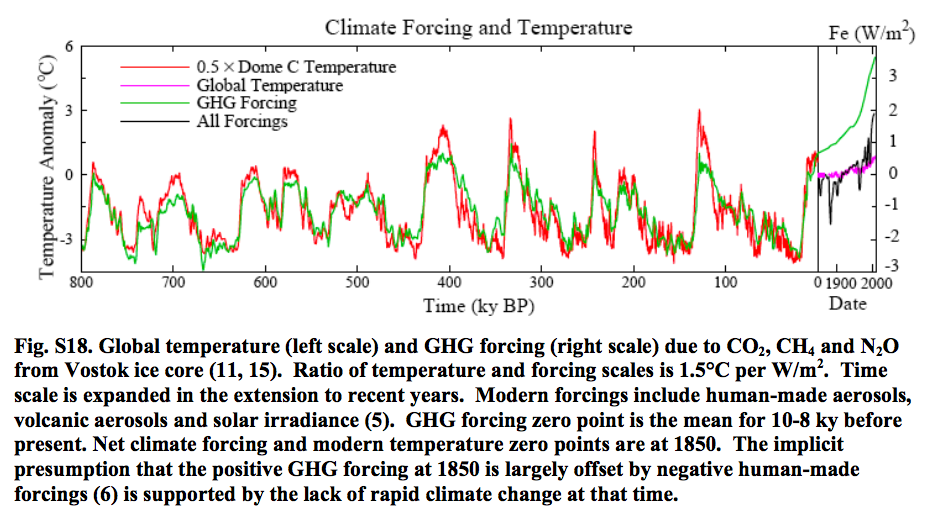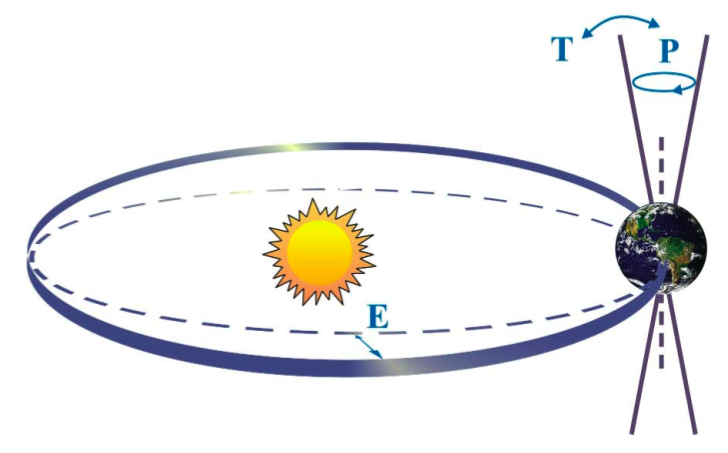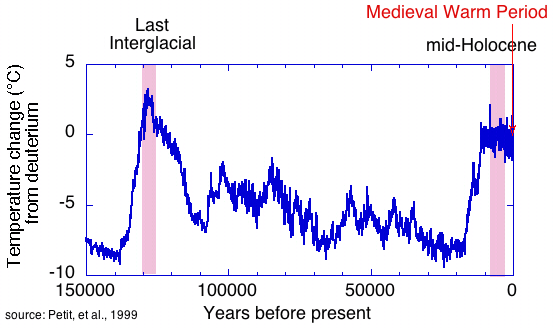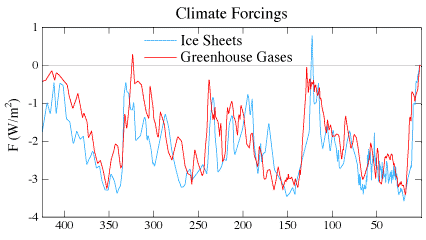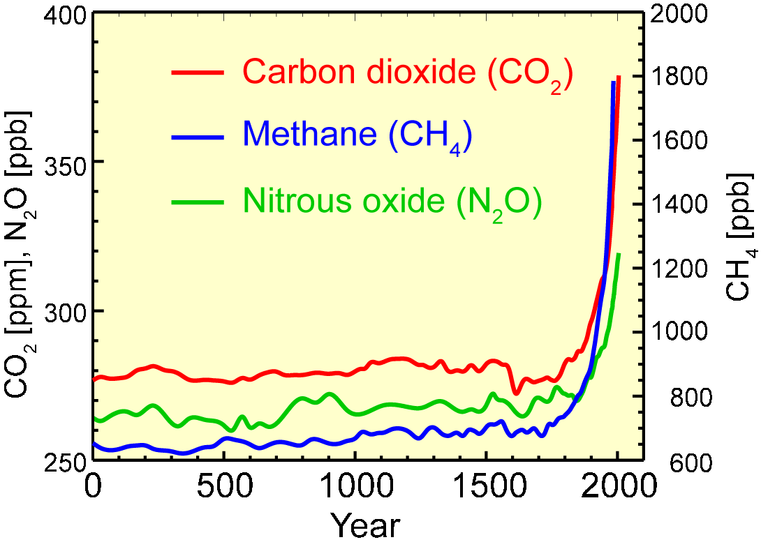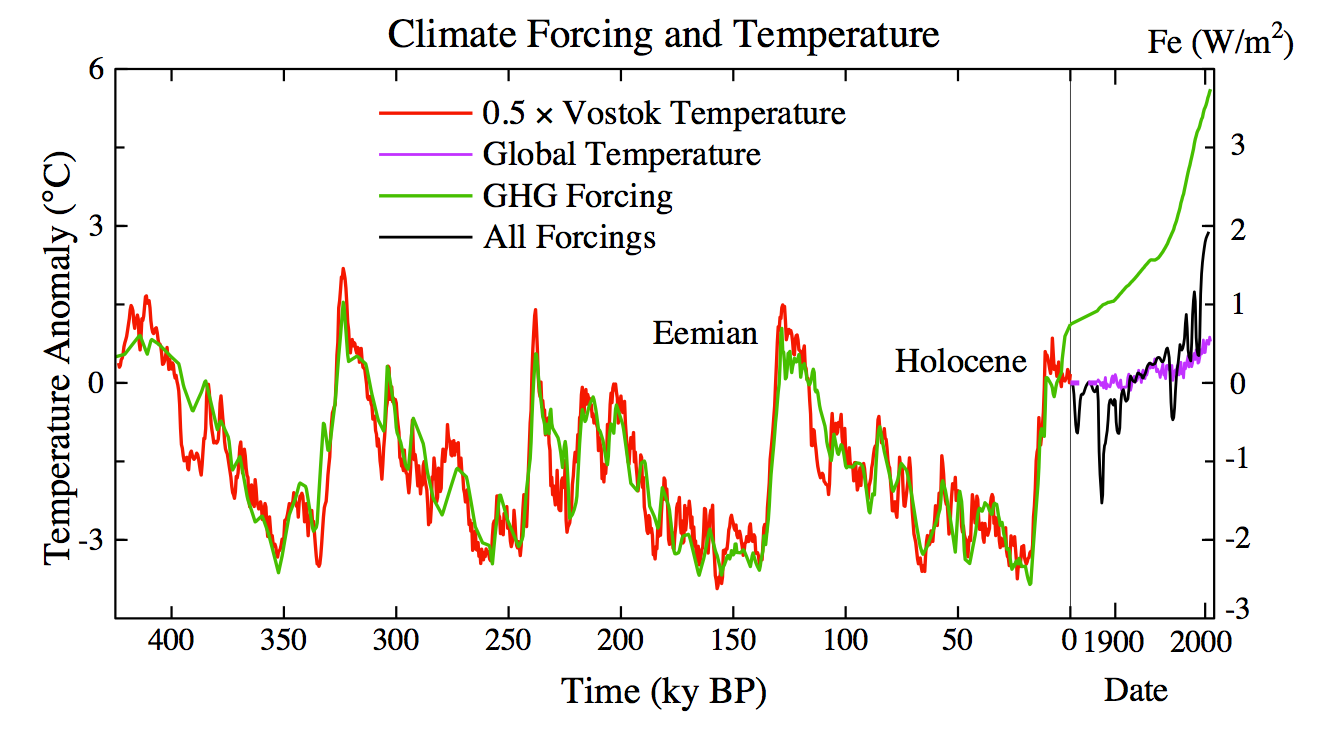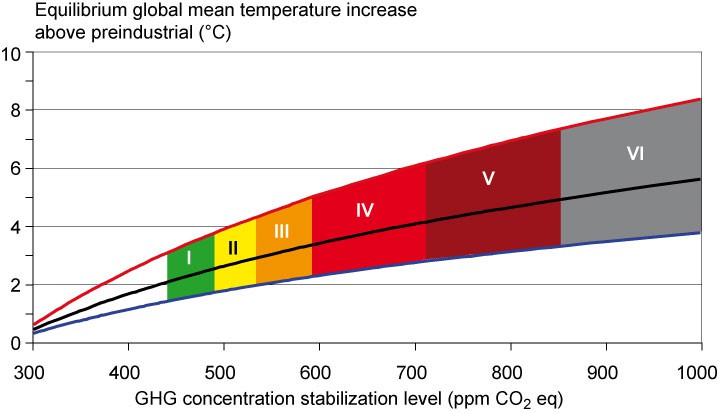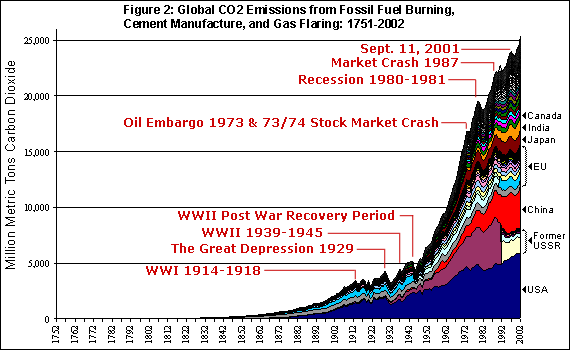What We Don’t Know
Context is Key
We don’t know everything.
While that is true, the question itself is misleading from the context of what is known. Most importantly, what we do know explains what is happening. So while we don’t know everything, it is not a reasonable argument to discredit what is well and reasonably known.
The Simple Short Story
What we do know in the climate models and the forcing explains the current warming with reasonable attribution. This is typically considered to explain 95% of the major forcing and the cause and effect relationships in consideration of the empirical evidence. However, we can see that we are virtually 100% on a different climate path and have departed from the natural cycle while natural variation is still occurring.
Things we don’t know include:
- How big the feedbacks will be?
- How fast will sea level rise?
- How much additional forcing will be imposed positive/negative
- What are the potential impacts of increasing methane and methane hydrate clathrate release?
These are the types of questions that are being asked. Not whether or not it is human caused. The major causes and forcings are fairly well known and much of the context is understood.
How do we view what we know – in relation to what we don’t know?
Simple, weigh the relevance of what we know, against what we don’t know, in relation to climate forcing.
With that context, we can see that what we do know explains the major forcing in the system and the rest is details that are either in the noise, which means not statistically significant, or possibly significant to a portion of forcing but not yet quantitative. In other words, the major forcing s are known and there is always more to learn.
Not that those details are not important. They are important because we want to know more about the feedback mechanisms and how that will affect the inhabitants of earth. We want to understand as much as possible, because it is directly related to our every day lives in the immediate future.
We know the major drivers of the climate system.
These include:
- Greenhous gas (GHG) and associated radiative climate forcing
- Solar irradiance (understood to be around 1366.5 W/m2 outside our atmosphere, in our atmosphere it includes +/- the GHG forcing, Milankovitch cycles and solar cycles, variance and luminosity changes)
- Albedo, that is the reflectivity of certain surfaces and aerosols (particulate matter) and their effects in certain areas of our atmosphere, or on land.
- Atmospheric Composition, that is how much of our atmosphere in the natural cycle is composed of greenhouse gas and its composition through the paleo history. We also know that we have significantly changed the composition.
Learning more about the details merely puts more icing on the cake of understanding. But learning more will unlikely change our fundamental view of the major forcings or causes (both natural and human).
Example – Automobile: A car has an engine and it runs on gasoline.
Components of Automobile:
- Car
- Engine
- Carburetor
- Gas Tank
- Gas
Let’s say we have a car and we know how much fuel it uses to travel a certain distance… if it gets 30 mpg., we know that if we have 4 gallons of gas, we can travel about 120 miles.
If the engine is running normally (call it natural cycle) then we are very confident (consensus) we (people that understand cars, engines and mpg) will be able to travel 120 miles with the 4 gallons of gas.
WHAT WE DON’T KNOW:
We may not know if the right rear turn signal is working, or if a break light went out. We might not know if the kids spilled a milkshake in the back seat. We might not know if the cars computer that measures functions is working properly… but if the engine is running normally, we know we will get about 120 miles with 4 gallons of gas.
Realistically, regarding how far we can travel, what we don’t know is not as important as what we know. Because we know how far we can go on the 4 gallons of gas, with the engine running normally. Whether or not the dash lights are working, or a fuse for the headlights may blow the next time they are turned on, will not change the fact that the car can travel about 120 miles on 4 gallons of gas.
Example – Earth Climate System: The engine is the atmosphere and the fuel is sunlight and greenhouse gases.
Components of Earth Climate System:
- Car = Climate System
- Engine = Earth System
- Carburetor = Milankovitch Cycles
- Gas Tank = Ocean/LandAtmosphere
- Gas = Sunlight/GHG’s
- Sunlight = energy input
- GHG’s = energy capture and hold capacity
For the purpose of this article with respect to global warming, the engine of the climate system (automobile) is the earth and the fuel is a combination of sunlight and greenhouse gases (GHG’s).
WHAT WE KNOW:
We generally understand the main functions and forces of the car (climate system) and the main fuel (Sunlight/GHG’s) and that adding or taking away fuel in the form of sunlight and GHG’s, we can travel farther, or less far in distance (get warmer or colder) in the atmosphere.
In other words, we know that with a certain amount of greenhouse gas and a certain amount of sunlight, we can travel a certain distance in the form of temperature.
This is indicated in the historical (paleo) records of when the engine is running normally/naturally (Milankovitch cycle – see below), or when we add fuel to the climate system in the form of greenhouse gases. For the purpose of this context normal/natural means unaffected by humans and large scale industrial processes.
Source: NASA
In the natural state, the amount of climate forcing (horsepower) is generally about 0 W/m2 for a typical warm period; and around -3.4 W/m2 for an ice age.
We know what drives the major forcings in the natural cycle.
The Carburetor
The carburetor that regulates this would be called the Milankovitch cycles, that is the movement of the planets that influence the earth orbit around the sun, and the tilt and wobble of our axis changing how much land surface faces the sun.
Source: NASA
We know the forcing levels for the natural cycle.
So we know that when we are around 0 W/m2 we get a warm period (like the one we entered 15,000 years ago); and when we are around -3.4 W/m2 we are in an ice age for about 90,000 years (like the one seen below).
Source: NASA
We know the natural cycles.
By examining a multitude of proxy data from different sources, we can see the natural cycles in the history of earth.
Source: NASA
We know that adding fuel allows you to travel further.
Adding Fuel
Source: IPCC
By adding greenhouse gases we know we have more fuel in the climate system, so we can travel further in the form of temperature increase.
We know we that since we added fuel to the climate system the forcing has increased.
Source: NASA
We know that since the forcing has increased, earth climate will get warmer.
Source: IPCC
We can see the correlation between human activity and CO2 Levels.
Source: EPA
To understand this in context, the most important point is that we know the major changes and forcings of the climate system and how much greenhouse gas and sunlight it takes to get there. That means we know the fuel and we know the engine. What we don’t know does not change the fact that we know adding fuel (greenhouse gas) to the atmosphere will drive the temperature up further.
It’s as simple as that.
It does not matter that we have not figured out when the blinkers, or headlights will fail, since they have less to do with how far we can travel, and are more to do with safety along the way.
We know how much greenhouse gas we have added to the atmospheric gas tank and we know pretty well how far that gas will take us in the form of temperature increase.
Regarding Safety Along the Way.
It is important to note that in this case, since we live on the planet, we want to know more about when the headlights might fail, as in our case that might mean when the sea level will rise a certain amount, or how much regional climate systems might shift, as that will affect food production.
These are important points, but have nothing to do with the ‘very high confidence’ that we now know the temperature will rise, due to increased radiative forcing, thus affecting the behavior of regional climate systems; and the sea level will rise in response to the temperature rise and that will affect the low lying cities and regions.
Summary
- We are confident in the fact that the natural cycles are largely bounded by the natural Milankovitch cycles.
- We are confident that we know how much greenhouse gas is in the natural cycle.
- We are confident we have added greenhouse gases to the atmosphere.
- We are confident we know how much greenhouse gases we added to the atmosphere from industrial processes.
- We are confident adding greenhouse gases are like adding fuel to a gas tank allowing us to travel further (warmer) in the form of temperature.
- We are confident that the things we don’t know are not the major forcings or climate drivers.
- We are confident that it will get warmer.
- We are not confident in how fast the positive feedbacks will become stronger and speed up the warming process.
- We are not confident in precisely how high the temperature will get because we do not yet fully understand the dynamics of the positive feedbacks that are expected.
- We are confident that everything is leaning towards the warmer side of the estimations of increase in values.

